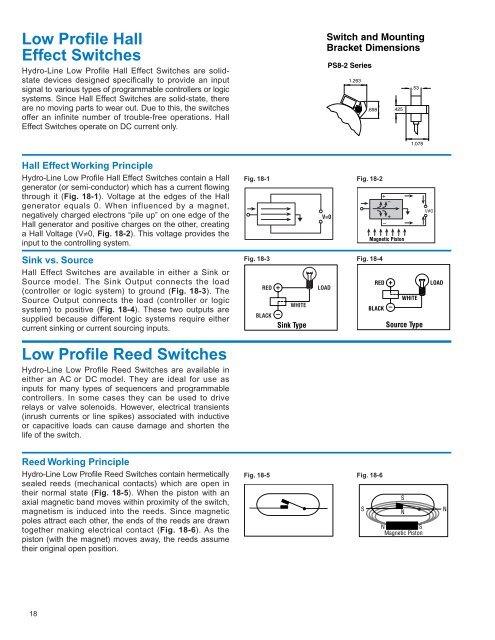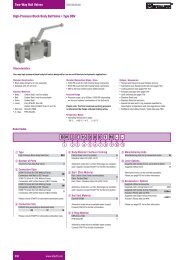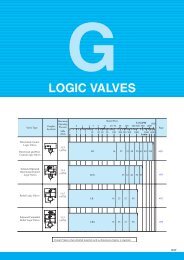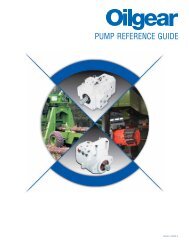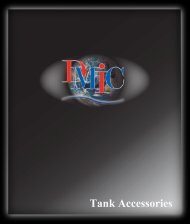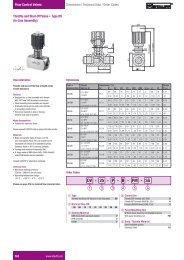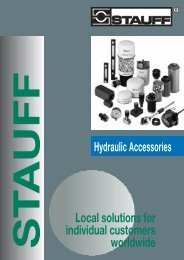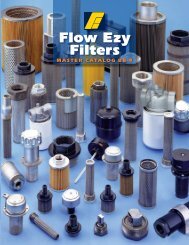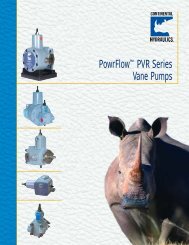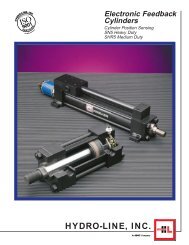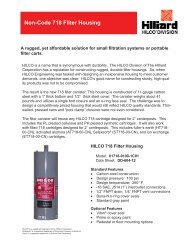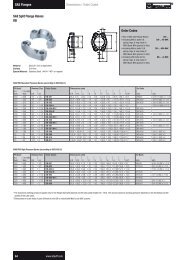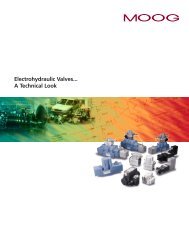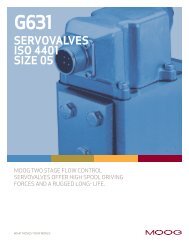Cylinders - Lifco Hydraulics USA
Cylinders - Lifco Hydraulics USA
Cylinders - Lifco Hydraulics USA
You also want an ePaper? Increase the reach of your titles
YUMPU automatically turns print PDFs into web optimized ePapers that Google loves.
Low Profile Hall<br />
Effect Switches<br />
Hydro-Line Low Profile Hall Effect Switches are solidstate<br />
devices designed specifically to provide an input<br />
signal to various types of programmable controllers or logic<br />
systems. Since Hall Effect Switches are solid-state, there<br />
are no moving parts to wear out. Due to this, the switches<br />
offer an infinite number of trouble-free operations. Hall<br />
Effect Switches operate on DC current only.<br />
Hall Effect Working Principle<br />
Hydro-Line Low Profile Hall Effect Switches contain a Hall<br />
generator (or semi-conductor) which has a current flowing<br />
through it (Fig. 18-1). Voltage at the edges of the Hall<br />
generator equals 0. When influenced by a magnet,<br />
negatively charged electrons “pile up” on one edge of the<br />
Hall generator and positive charges on the other, creating<br />
a Hall Voltage (V≠0, Fig. 18-2). This voltage provides the<br />
input to the controlling system.<br />
Sink vs. Source<br />
Hall Effect Switches are available in either a Sink or<br />
Source model. The Sink Output connects the load<br />
(controller or logic system) to ground (Fig. 18-3). The<br />
Source Output connects the load (controller or logic<br />
system) to positive (Fig. 18-4). These two outputs are<br />
supplied because different logic systems require either<br />
current sinking or current sourcing inputs.<br />
Fig. 18-1 Fig. 18-2<br />
Fig. 18-3 Fig. 18-4<br />
Low Profile Reed Switches<br />
Hydro-Line Low Profile Reed Switches are available in<br />
either an AC or DC model. They are ideal for use as<br />
inputs for many types of sequencers and programmable<br />
controllers. In some cases they can be used to drive<br />
relays or valve solenoids. However, electrical transients<br />
(inrush currents or line spikes) associated with inductive<br />
or capacitive loads can cause damage and shorten the<br />
life of the switch.<br />
Reed Working Principle<br />
Hydro-Line Low Profile Reed Switches contain hermetically<br />
sealed reeds (mechanical contacts) which are open in<br />
their normal state (Fig. 18-5). When the piston with an<br />
axial magnetic band moves within proximity of the switch,<br />
magnetism is induced into the reeds. Since magnetic<br />
poles attract each other, the ends of the reeds are drawn<br />
together making electrical contact (Fig. 18-6). As the<br />
piston (with the magnet) moves away, the reeds assume<br />
their original open position.<br />
Fig. 18-5 Fig. 18-6<br />
S<br />
S<br />
N<br />
N<br />
S<br />
Magnetic Piston<br />
N<br />
18


